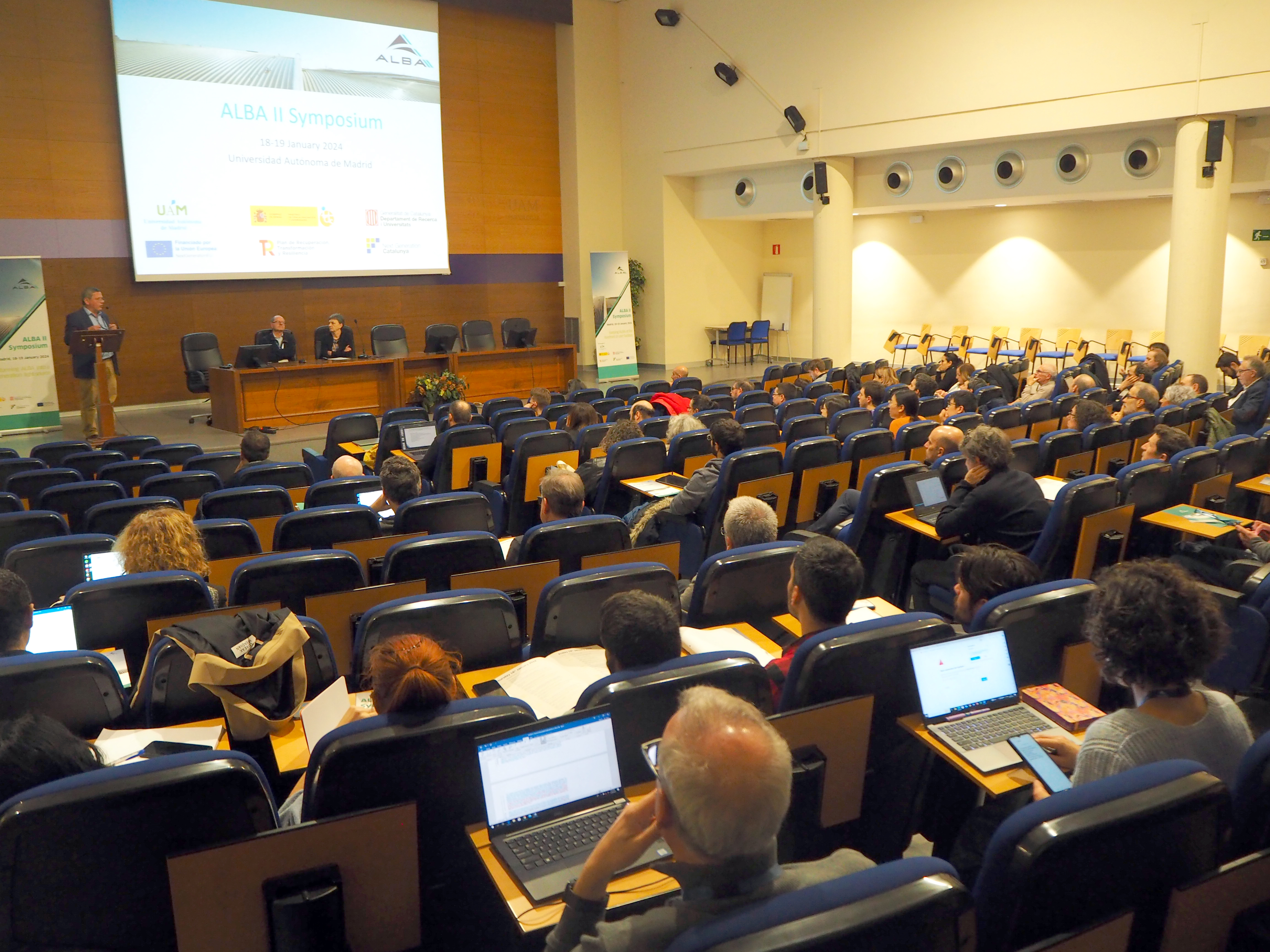ALBA Synchrotron

More than 120 people attended the ALBA II Symposium, held at the Universidad Autónoma de Madrid the 18-19 January 2024, and engaged in lively discussions and ideas exchange about the future of the ALBA Synchrotron.
The auditorium of the faculty of Psychology at the Universidad Autónoma de Madrid (UAM) was the scenery of an unprecedented scientific event, aimed at discussing about the great potential of 4th generation light sources for Spanish science and how the upgrade project of the ALBA Synchrotron, ALBA II, will meet these standards.
The event was organised with the help of the Centre for Micro Analysis of Materials (CMAM). It started the afternoon of the 18th of January with forefront presentations by renowned scientists, all expert synchrotron users, with farsightedness in scientific priorities and technologies. Three sessions were intertwining different fields linked by methodologies. The multi-length scale imaging session counted with Noa Martín-Cófreces (Hospital La Princesa), Miguel Ángel García Aranda (Universidad de Málaga) and Sandra Ruiz-Gómez (Max Planck Institute for Chemical Physics of Solids). The session on multimodal and big data approaches included Eugenio Coronado (Universidad de Valencia), Fernando Díaz (CIB Margarita Salas) and Janis Timoshenko (FHI Berlin). The final session on operando, in-situ and in-vivo/in-vitro environments incorporated the speakers Carles Bosch (The Francis Crick Institute), Patricia Concepción (Instituto de Tecnología Química ITQ-CSIC) and Miguel Anaya (Universidad de Sevilla). All the contributions highlighted the users' need to push for more spatial resolution and quicker experiments, having user-friendly modes of operation, and the urgency of developing solid data infrastructures and management systems.
The following day was devoted to explain the current status of the ALBA II project, how it will evolve, how the new beamlines will look like and the impact of computing and data in experiments. There was also time to talk about ongoing collaborations like the , the that will settle a unique in-situ correlative infrastructure in 2025 or the to drive sustainable energy solutions. Networking coffee and lunch breaks offered the opportunity of strengthening existing collaboration links and creating new ones.
The event was closed by José María Martell, vicepresident of CSIC, UAM vice rectors Daniel Jaquel and Miguel Manso and finally Ángela Fernández Curto, from the Ministry of Science, Innovation and Universities, who expressed the support of the Ministry to the future of the infrastructure.
The event's organisers are very satisfied with the outcome. Caterina Biscari, director of ALBA, and Klaus Attenkofer, scientific director of ALBA, highlighted that ALBA is at the service of the scientific community, "identifying their needs, exchanging know-how and networking is key to the success of ALBA II".